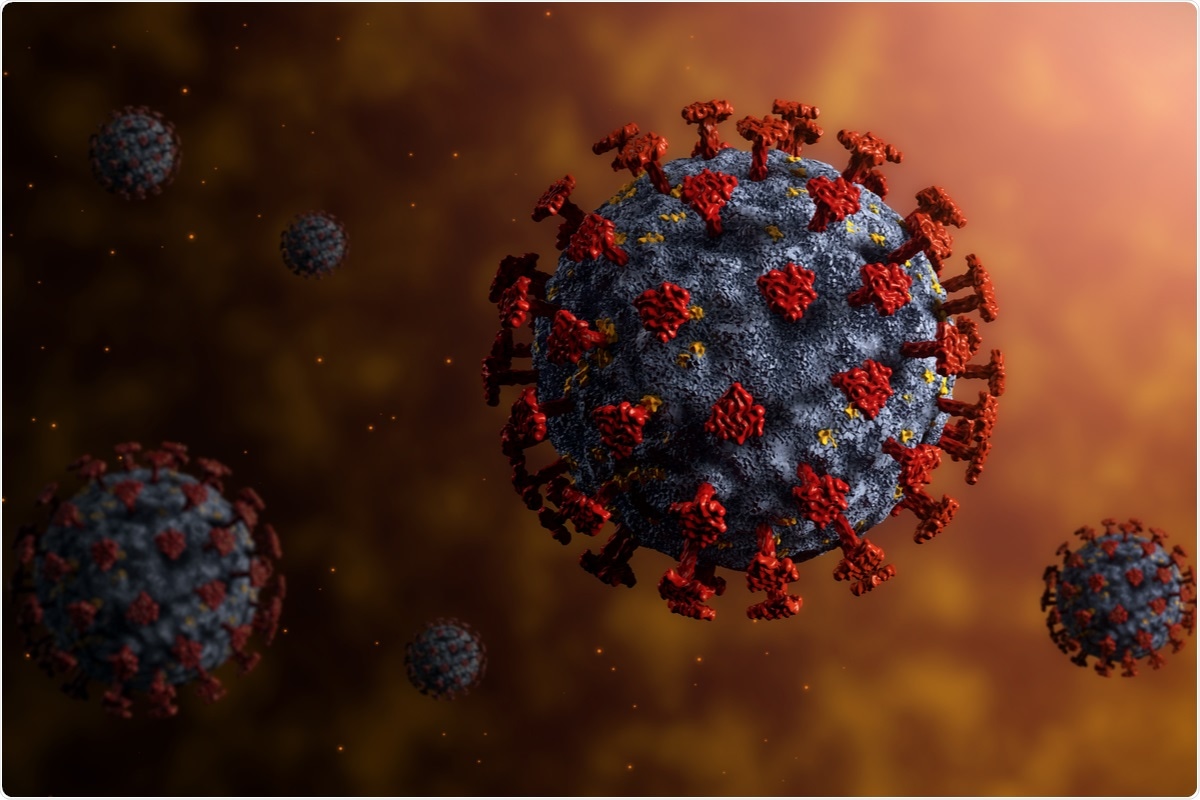Severe acute respiratory syndrome coronavirus 2 (SARS-CoV-2) and murine hepatitis virus (MHV) are of the same genus (β coronavirus). Therefore, it is suggested that MHV can be utilized as an excellent persistent surrogate model for SARS-CoV-2. Furthermore, a recent study conducted on wastewater showed no statistically significant difference in the RNA decay of SARS-CoV-2 compared to MHV.
 Study: A biosafety level 2 surrogate for studying SARS-CoV-2 survival in food processing environmental biofilms. Image Credit: MotionEmo/ Shutterstock
Study: A biosafety level 2 surrogate for studying SARS-CoV-2 survival in food processing environmental biofilms. Image Credit: MotionEmo/ Shutterstock

 This news article was a review of a preliminary scientific report that had not undergone peer-review at the time of publication. Since its initial publication, the scientific report has now been peer reviewed and accepted for publication in a Scientific Journal. Links to the preliminary and peer-reviewed reports are available in the Sources section at the bottom of this article. View Sources
This news article was a review of a preliminary scientific report that had not undergone peer-review at the time of publication. Since its initial publication, the scientific report has now been peer reviewed and accepted for publication in a Scientific Journal. Links to the preliminary and peer-reviewed reports are available in the Sources section at the bottom of this article. View Sources
One of the leading carriers of foodborne pathogens and a significant threat to food safety is the formation of biofilms in food processing facilities. Within food processing facilities, the main focus of research has been fungal and bacterial biofilms, with limited research focussed on viral particles in the mixed-species biofilm community. However, several factors could promote the harboring of SARS-CoV-2 in meat processing facilities, including the temperature meat is stored and the materials of surfaces used in such facilities.
In the context of stability and infectious state of the virus in multi-species biofilms, there is a critical gap in the knowledge. Therefore, researchers from Texas A&M University inoculated MHV (SARS-CoV-2 surrogate) into a meat processing environmental biofilm and developed it on stainless steel (SS), PVC, and tiles at 7°C. The survival of the virus was then analyzed via quantitative polymerase chain reaction (qPCR) and plaque assays to evaluate the survival rates of the viral particles in the environmental biofilms.
A preprint version of this study, which is yet to undergo peer review, is available on the bioRxiv* server.
The study
Drain samples containing environmental microorganisms were developed on a SS chip, a PVC chip, and a tile surface for five days at 7°C with or without MHV. The mean biofilm microbial cells recovered from the SS chip with MHV ranged from 3.5 to 6.0e+6 CFUs/mL, which was a 1.74-fold increase compared to the chip without MHV. From the PVC chip without MHC, the mean biofilm microbial cells recovered ranged from 1.8 to 4.0e+g CFUs/mL, whereas the range of total biofilm microorganisms retrieved from the chip with MHV increased to a range of 5.0 to 7.8e+6 CFUs/mL, which was a 2.1-fold increase. For the tile chip without MHV, the mean biofilm microbial cells recovered ranged from 1.8 to 3.8e+6 CFE/mL, which increased 2.11-fold to 4.8 to 7.0e+6 CFUs/mL for the tile with MHV.
For the qPCR, the biofilm and MHV sample on SS chips had an average critical threshold (CT) of 15.4, whereas the CT for the virus by itself on SS was 14.2. For the biofilm and MHV sample on PVC chips, the CT was 15.6, and for the virus itself on PVC the CT was 14.0. For the biofilm and MHV sample on tile chips, the CT was 22.0, and for MHV by itself, the CT was 21.6.
For the plaque assay results, the biofilm and MHV samples on the SS chips had an average viral particle unit (VPU)/mL of 650VPUs/mL, whereas, for the MHV sample by itself on the SS chips, the VPUs/mL was 4250 VPUs/mL, which was a 6.54-fold difference. For the biofilm MHV samples on the PVC chips, the average VPUs/mL was 600 VPUs/mL, whereas the average VPUs/mL for the virus by itself on the PVC chips was 5500 VPUs/mL, which was a 9.17-fold difference. For the biofilm and MHV samples on the tile chips, the average VPUs/mL was 675 VPUs/mL, whereas the average VPUs/mL for the virus on the tile chips was 6250 VPUs/mL, which was a 9.26-fold difference.
Implications
The results from this study show that environmental multi-species biofilms found in meat processing plants are capable of harboring viral particles, specifically MHV, which was used as a surrogate for SARS-CoV-2. Furthermore, these viral particles can survive for extended periods protecting them from sanitizers. Therefore, this allows for a safe reservoir for the virus to dwell and be dispersed periodically within the meat processing facility, making such facilities a hotspot for increased numbers of SARS-CoV-2 infections.
Future studies conducted on this topic should focus on deciphering the molecular mechanism of how these interactions occur. Gaining this knowledge will help design targeted intervention strategies to reduce the harbourage and spread of viral lodged multi-species biofilms.

 This news article was a review of a preliminary scientific report that had not undergone peer-review at the time of publication. Since its initial publication, the scientific report has now been peer reviewed and accepted for publication in a Scientific Journal. Links to the preliminary and peer-reviewed reports are available in the Sources section at the bottom of this article. View Sources
This news article was a review of a preliminary scientific report that had not undergone peer-review at the time of publication. Since its initial publication, the scientific report has now been peer reviewed and accepted for publication in a Scientific Journal. Links to the preliminary and peer-reviewed reports are available in the Sources section at the bottom of this article. View Sources